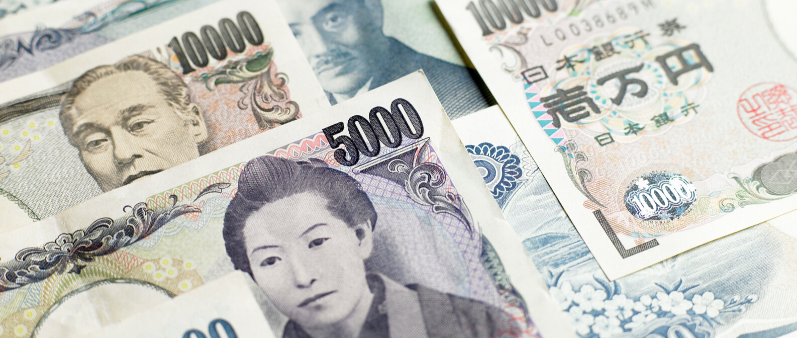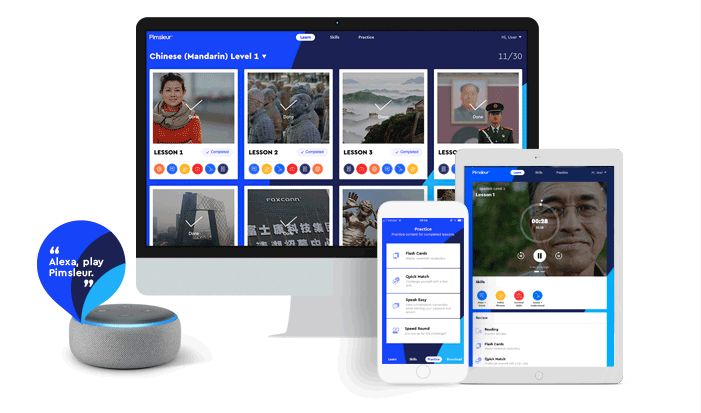
Your Complete Guide on How to Pay for Things & Money in Japan
Heading to Japan on vacation? It is important to know how to pay for things in Japan to ensure that your trip goes smoothly (and you don’t offend anyone in the process).
Japan is known for being a highly structured and organized society, so it is important to understand its economy and way of doing business in order to be mindful and respectful of its common cultural practices.
This article will provide you with the following:
- Basic overview of the Japanese currency & conversions
- Tips for proper purchasing etiquette in Japan
- Basic Japanese phrases to pay for things
Now you don’t have to wait until your fifth time buying green tea mochi to figure out how to pay. Let’s get started.
What is the Currency in Japan?
The form of currency used in Japan is the Japanese Yen (JPY), denoted by the symbol ¥. Yen notes include values of 1,000, 2,000, 5,000, and 10,000. Additionally, there are yen coins with values of 1, 5, 10, 50, 100, and 500.
The Japanese Yen is the third most traded form of currency on the foreign exchange market, following the U.S. dollar and the euro.
Japan is known for its very industrialized economy, specializing in sectors such as automobiles, electronics, and machinery. Japan has the third-largest economy in the world, with a GDP of $5.4 trillion.
Conversion Rate of Japanese Yen to U.S. Dollar
As of July 2023, one U.S. dollar is worth roughly 140 Japanese Yen. One euro is worth roughly 156 Japanese Yen.
500 USD is worth roughly 70,000 JPY, so if you are American, don’t be alarmed when you see prices and values that are much higher than what you are used to. Likewise, 500 EUR is worth roughly 78,000 JPY.
Japanese Yen to USD conversion rates can fluctuate day by day, so make sure to check right before your trip to get the most accurate rate.
140 yen, or 1 U.S. dollar, can get you a candy bar of your choice at any local convenience store. 70,000 yen, or 500 U.S. dollars, can get you a weekend stay at a mid to upper-range hotel in Tokyo.
Average Prices for Basic Goods in Japan
- Bottled water: ~100 yen
- Regional Train Fare in Tokyo: 150 yen (starting fare)
- McDonald’s Big Mac Meal: ~700 yen
- Bowl of Ramen: ~1,000 yen
- Sake: ~1,200 to 10,000 yen
Best Apps for Knowing How Much to Pay in Yen
Seeing as the currency fluctuates every day and many of the signs in Japan are not in English, here are some apps that will always help you identify how much to pay.
GlobeConvert Currency & Units for Converting Money
Choose the type of currency you wish to convert to/from and enter the value, and immediately get the most up-to-date exchange rates to help you keep track of your budget.
This app is especially helpful if you are visiting more than one country or using multiple different forms of currency and want to keep up with conversions.
Google Translate for Translating Signs
Source: Google Translate App Translates Text with Camera, NewsWatch TV
Google Translate’s newest feature allows users to take a photo of a sign, menu, poster, etc. and the app will translate a sentence from your photo.
What is the Best Way to Pay in Japan?
Between credit cards and cash, cash will always be your safest bet, but more developed cities welcome the credit wave. Here’s why.
1. Cash
Cash is the preferred payment option in Japan. Despite being a highly industrialized and developed nation, cash is generally the safest form of payment in Japan as it is most convenient for many businesses, retailers, and restaurants.
You can easily get away with purchasing an inexpensive item with a large-value note and receiving change for it without any issues from a vendor, seeing that cash is so commonly used.
Especially in smaller areas outside of the main cities, credit cards may not be accepted at all, so you will want to make sure you have enough cash to cover all of your expenses.
2. Credit Cards
Credit cards are typically an unpopular payment method in Japan, however they have recently become a more common option.
You are likely to be able to use credit cards in more upscale areas of the city and at larger establishments, such as hotels, luxury retail, department stores, high-end restaurants, supermarkets, and train stations.
Visa, MasterCard, and Discover are the most widely accepted cards for those businesses that do accept credit cards.
**You will also want to make sure to notify your bank ahead of traveling and specify the dates that you will be gone to ensure all of your transactions will be approved.
Japanese Paying Etiquette: Tipping, Change, & More
When traveling to Japan (or any foreign country for that matter) it is important to take the cultural practices into account to avoid any offensive or embarrassing behavior.
Japan is a very structured society that places a strong emphasis on respect, a strict focus on education, and a high value on formality. Some of these norms can be observed and practiced through simple everyday tasks, such as making a transaction.
Here are a few general guidelines for proper etiquette when purchasing goods in Japan:
1. Forming an Orderly Line is Necessary for Payment
Following the formal, respectful norms of Japanese culture, it is common practice to form a line and patiently wait your turn to check out. Often times there will be tape on the floor or a roped off section to guide customers in an orderly fashion.
2. Tipping is Not Usually Custom
Unlike the United States, customers are not expected to tip in Japan.
Say whaaat?
Tipping culture simply does not exist in Japan, and it can even be seen as rude or insulting, so don’t worry about having to calculate a percentage to tip after every meal.
Rare exceptions to consider: There are some exceptions to this rule when it comes to special services.
Let’s look at an example. If you take a tour of one of Japan’s famous summer festivals, it may be appropriate to tip your tour guide.
However, even in these cases, you should not simply pull out your wallet and hand over the cash.
If you are going to tip, it is customary to put the money into an envelope and seal it, which you should then hand to your service provider with both hands on the envelope and give a slight bow to show your respect.
3. Recounting the Change You Received May Be Considered Rude
Should you need change from a cashier, they will slowly count out the exact amount in front of you to make it very visible that you are receiving the correct amount back.
You should be paying close attention to the cashier and accept the change without counting it yourself. Counting your change right after the cashier has done it in front of you is seen as offensive, as if you don’t trust their skills.
4. Asking for the Check is Kosher
If your check was not already placed on your table at the end of a meal, you may need to ask the waiter or waitress, “Okanjou wo onegai shimasu?” which translates to “Can I have the bill please?”
Check out some common restaurant phrases in Japanese:
5. Asking if Credit Cards are Accepted is Crucial
Before you walk into a store or restaurant, if you don’t already see a credit card logo anywhere around the entrance, you can ask, “Kurejittokādo wa tsukaemasu ka?” which translates to “Do you accept credit cards?”
For more on money in Japan, ATMs, and exchanging cash, check out this video.
Japanese Money Vocabulary
Here is a quick list of common translations regarding payments and purchases in Japanese:
| Please | お願いします Onegaishimasu |
| Thank You (Past Tense) | ありがとうございました Arigatōgozaimashita |
| Excuse Me | すみません Sumimasen |
| Do you accept…? | 受けますか?Ukemasu ka…? |
| Cash | 現金 Genkin |
| Cash Only | 現金のみ Genkin nomi |
| Credit Card | クレジットカード Kurejittokādo |
| Check Out | チェックアウト Chekkuauto |
| Total | 合計 Gōkei |
| Tip | 先端 Sentan |
How to Learn Basic Japanese for Travel to Japan
Want to feel more prepared to make purchases while traveling in Japan?
Start working on your Japanese language skills today by downloading the Pimsleur app. You’ll learn essential core vocabulary, take quizzes, and watch entertaining videos.

Get started with a free week trial!
No Comments for "Money in Japan: How to Pay for Things"